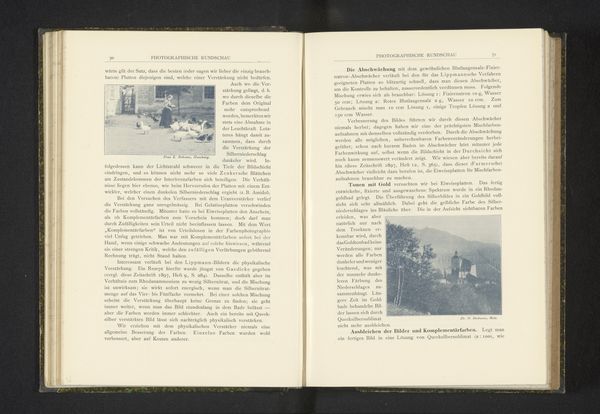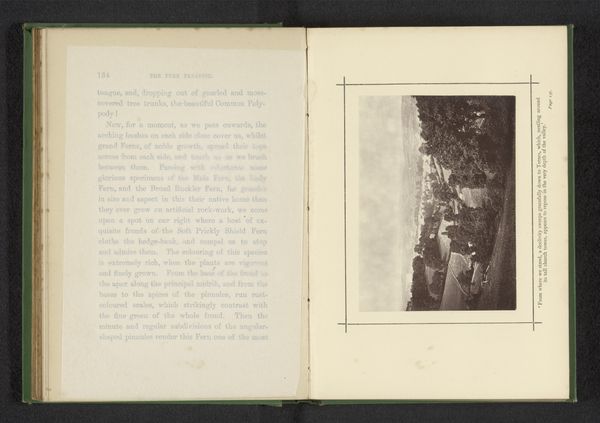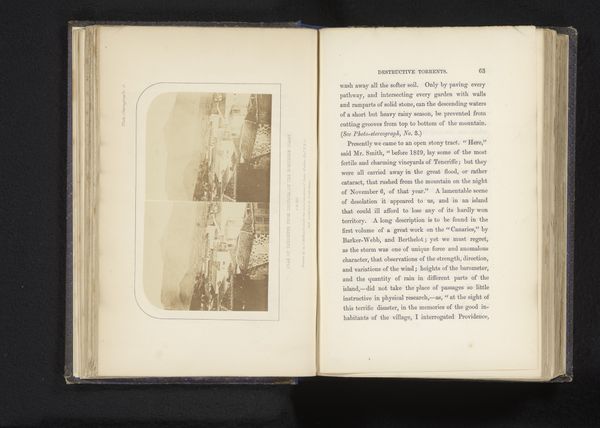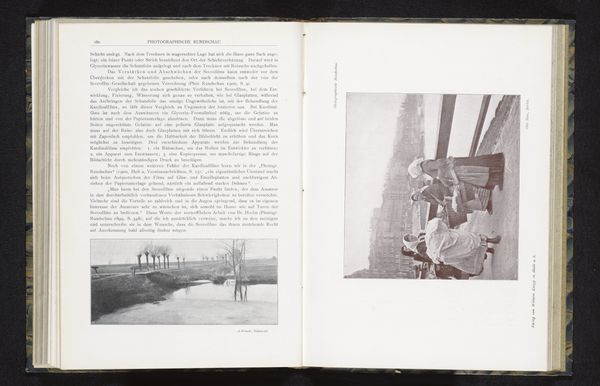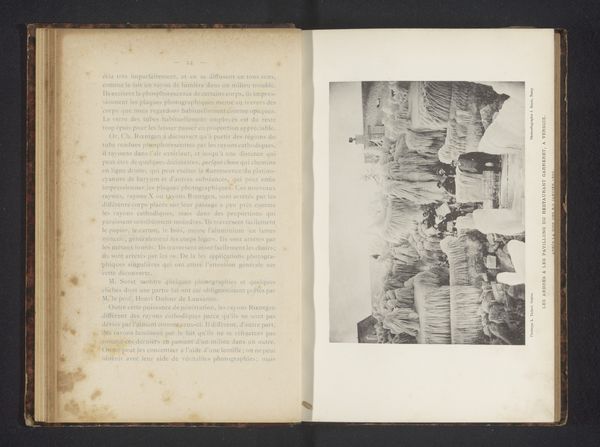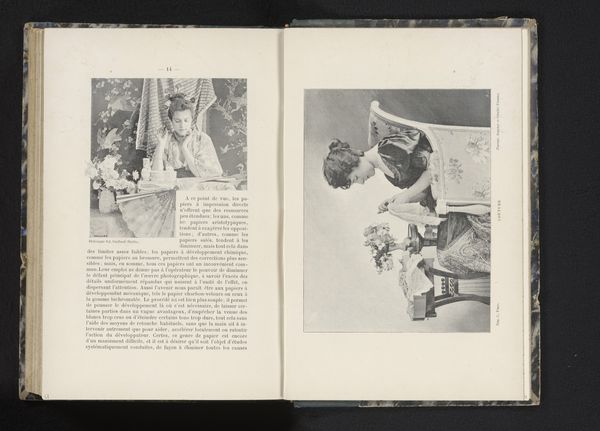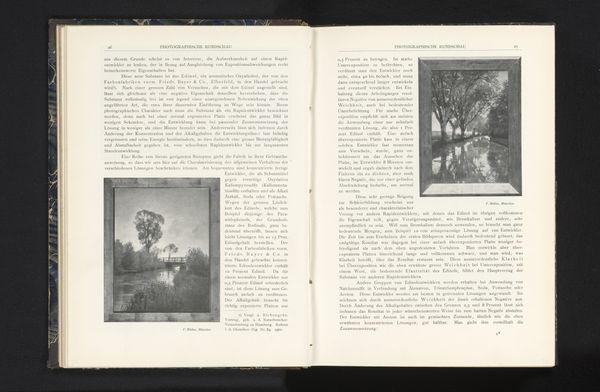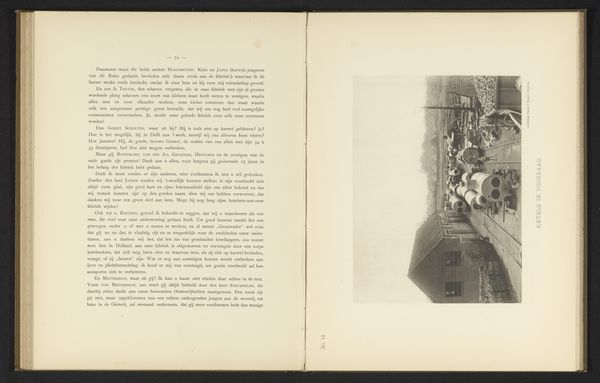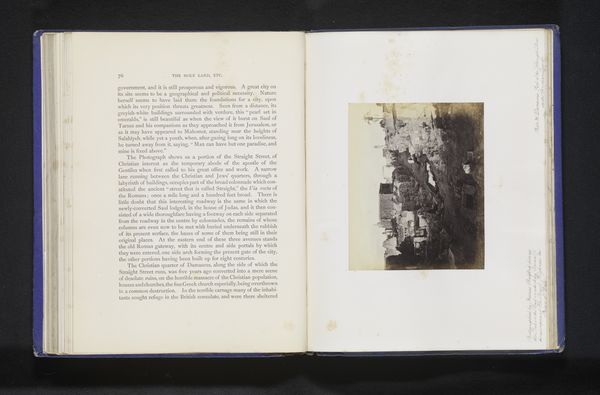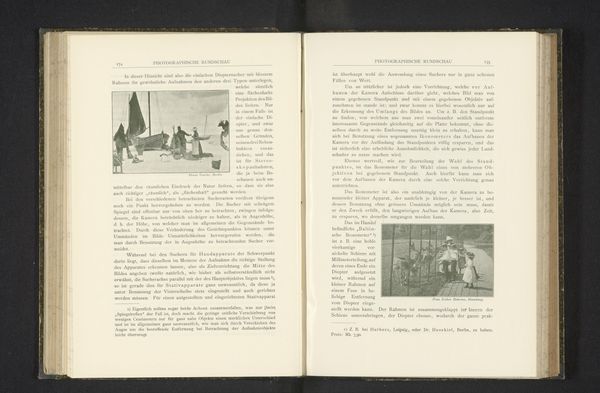
Twee wandelende personen in het Bois de Boulogne en een portret van Georges Cain in zijn studio in Parijs, Frankrijk before 1896
0:00
0:00
print, photography
#
portrait
# print
#
photography
#
genre-painting
Dimensions: height 234 mm, width 152 mm
Copyright: Rijks Museum: Open Domain
Editor: Here we have an anonymous photograph from before 1896, showing two scenes: "Two Walking People in the Bois de Boulogne" and "A Portrait of Georges Cain in his Studio in Paris, France.” There's something so serene and almost staged about the top image. What can you tell me about the relationship between these scenes and their time period? Curator: That's a great question. Placing these images within the context of late 19th-century Paris, we see the *flâneur* in action, capturing modern life as it unfolds. However, consider the social implications: Who had the leisure to stroll in the Bois de Boulogne? Who had the means to commission or create art? The seemingly "serene" quality masks the underlying power dynamics of the time. Notice the sharp contrast between the upper and lower images, hinting at the class differences of who has the power to be presented how. What do you make of this tension? Editor: That's a great point about leisure and access. The two are implicitly connected! The top scene really romanticizes it. Then the bottom is sort of like 'ok, now here is the production line". Are there ways the images relate besides that? Curator: Think about how each scene portrays its subjects. The artist is self-aware and almost like a showcase of what he produces in his free time, reinforcing a certain idea of professional and the working class, maybe for an aspirational consumer. Now the couple embodies bourgeois ideals and consumerism, but they are at a great remove because we, the audience, only experience their images. Do these differences influence your interpretation of turn-of-the-century Parisian society? Editor: Yes, absolutely! This makes me consider how even everyday photographs participated in constructing specific class identities and narratives of the time. So, the framing is political, especially within that historical context. Thanks! Curator: Exactly. By recognizing the cultural and political forces at play, we can move beyond simply seeing the images and understand them as active participants in shaping society's understanding.
Comments
No comments
Be the first to comment and join the conversation on the ultimate creative platform.
